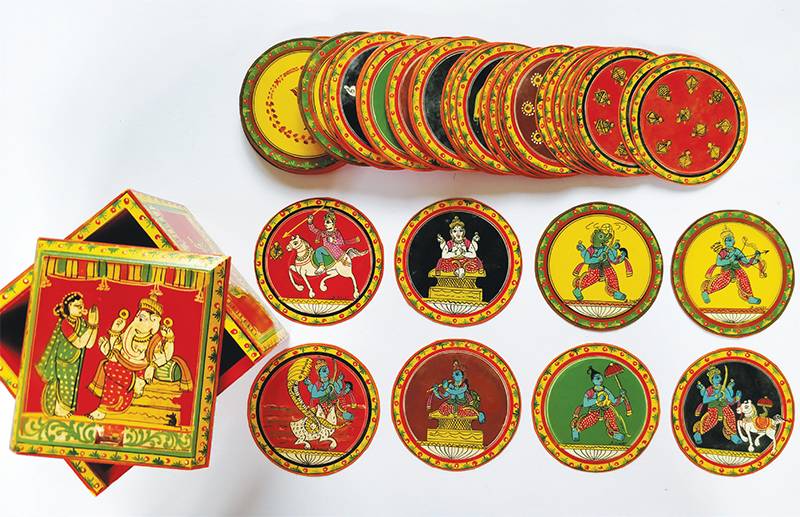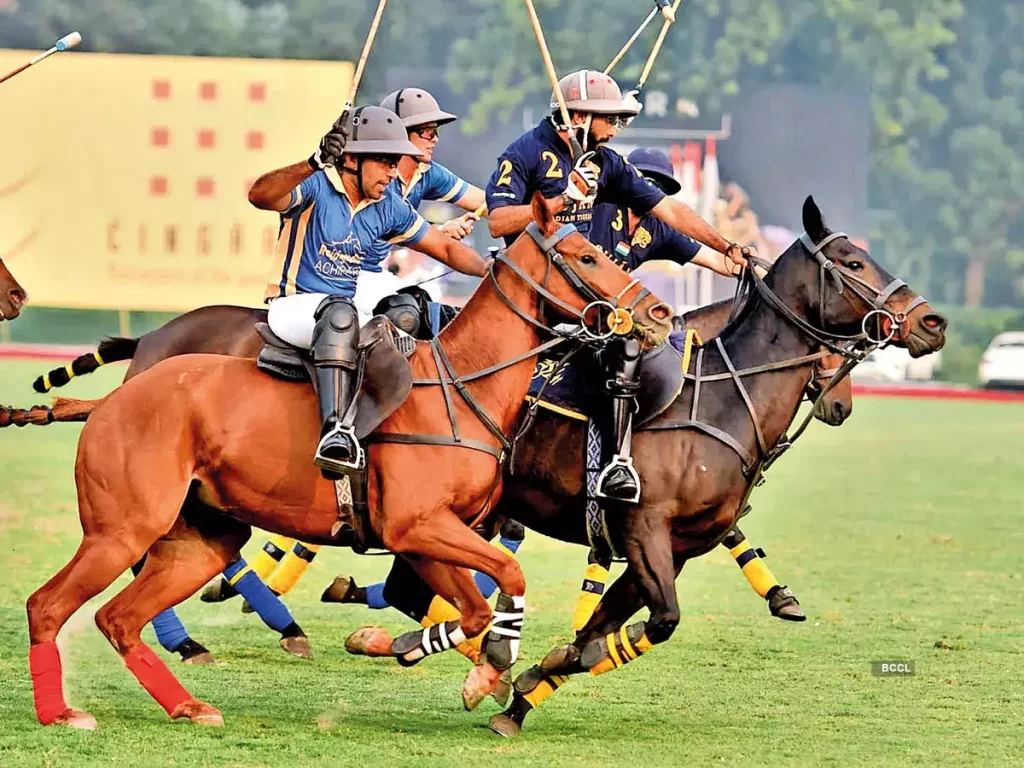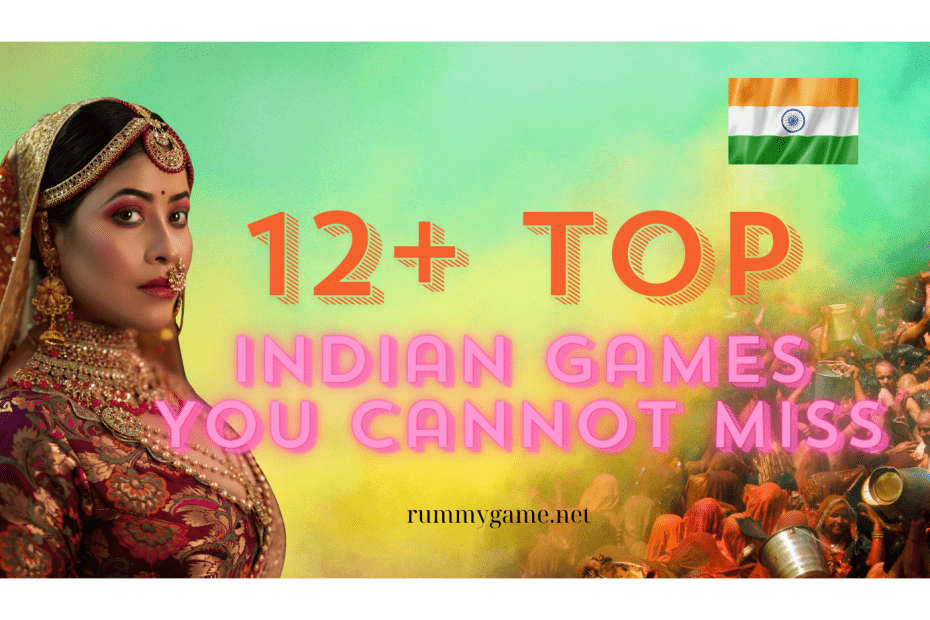Do you know that many card games, board games, sports that you are playing nowadays have their roots in India? For example, Chess, Judo, and Badminton are used to be thought of as Western-related games, nope, it is all from India. It’s not too late to begin your journey to explore India, its rich and immersed culture won’t disappoint you. Let’s start with 12 popular traditional games of India the ones that not only Indians, but also people around the world, well liked.
Table of Contents
Caroom - Traditional Games of India
Carroom is one of the most popular traditional games of India. It is also known as karrom, a strike-and-pocket board game, that is played on a square board with four pockets at the corners. Each player has nine carrom men (or coins) of one colour, and the goal is to pot all of your own men before your opponent does.
How to play Caroom?
This popular game of India begins with all of the carrom men placed in the centre of the board. One player breaks the group of Carrom men by flicking the striker into them. Players then take turns flicking the striker to try to pot their own men into the pockets.
To pot a carrom man, the striker must hit it directly and send it into a pocket. If the striker hits a carrom man that is already in motion, the shot is considered a foul and the carrom man is returned to the board.
A player wins the game by potting all of their own carrom men before their opponent does.
Pachisi - Traditional Games of India
One of the greatest traditional games of India is Pachisi, a cross and circle board game that originated in Ancient India. It is described in the ancient text Mahabharata under the name of “Pasha”.
How to play Pachisi?
It is played on a board shaped like a symmetrical cross. A player’s pieces move around the board based upon a throw of six or seven cowrie shells, with the number of shells resting with the aperture upward indicating the number of spaces to move.
Pachisi is a game for two, three, or four players, four usually play in two teams. One team has yellow and black pieces, the other team has red and green. The team which moves all its pieces to the finish first wins the game.
Indian Rummy - Traditional Games of India
Indian Rummy is a traditional card game that originated in India. It is a variation of the popular card game Gin Rummy. Indian Rummy is played with a standard deck of 52 cards, with the jokers removed.
How to play Indian Rummy?
The game is played between two to six players. Each player is dealt 13 cards. The remaining cards are placed face down in a pile, called the stock. One card is turned face up next to the stock, called the discard pile.
The goal of the game is to be the first player to meld all of their cards into sets and sequences. A set is three or four cards of the same rank, such as three aces or four kings. A sequence is three or more cards of the same suit in consecutive order, such as 3-4-5 of hearts or 6-7-8-9 of diamonds.
Players can meld their cards by placing them face up on the table. Players can also meld cards that have already been melded by other players. To meld a card from another player’s meld, the player must replace the card with another card of the same rank or suit.
When a player melds all of their cards, they knock. The other players then show their cards. The player with the lowest deadwood (unmelded cards) wins the round.

304 - Traditional Games of India
How to play 304?
- 7: 1 point
- 8: 2 points
- 9: 3 points
- 10: 4 points
- Jack: 5 points
- Queen: 6 points
- King: 7 points
- Ace: 8 points
The team that wins the most tricks wins all of the points in those tricks. The first team to reach 304 points wins the game.
Teen Patti - Traditional Games of India
Teen Patti is a three-card brag gambling game that originated in India. It is one of the most popular Traditional Games of India and South Asia, which is also known as 3 Patti, Flash, or Flush.
How to play Teen Patti?
Teen Patti is played with a standard deck of 52 cards, with the jokers removed. The game is played between three to six players. Each player is dealt three cards face down. Players can then choose to play one of the following actions:
- See: To see the cards of the other players, the player must place a bet. If the player’s cards are better than the other players’ cards, they win the bet.
- Raise: If a player has good cards, they can raise the bet.
- Fold: If a player has bad cards, they can fold and forfeit their bet.
The game continues until all of the players have either folded or seen. The player with the best hand wins the pot.
Hand rankings
The hand rankings in Teen Patti are as follows:
- Trail: A trail is three cards of the same rank, such as three kings or three aces.
- Pure Sequence: A pure sequence is three consecutive cards of the same suit, such as 3-4-5 hearts or 6-7-8 diamonds.
- Sequence: A sequence is three consecutive cards of any suit, such as 3-4-5 of hearts, clubs, or spades.
- Colour: A colour is three cards of the same suit, but not in sequence.
- Pair: A pair is two cards of the same rank.
- High Card: If no other hands are present, the highest
Snooker - Traditional Games of India
Snooker is a cue sport, traditional indoor game in India played on a rectangular billiards table covered with a green cloth called baize, with six pockets, one at each corner and one in the middle of each long side.
First played by British Army officers stationed in India in the second half of the 19th century, the game is played with twenty-two balls, comprising a white cue ball, fifteen red balls, and six other balls—a yellow, green, brown, blue, pink, and black—collectively called the colours.
Using a cue stick, the individual players or teams take turns striking the cue ball to pot other balls in a predefined sequence, accumulating points for each successful pot and for each time the opposing player or team commits a foul. An individual frame of snooker is won by the player who has scored the most points.
How to play Snooker?
The game is played in a series of frames, with the first player to win a certain number of frames (usually 4, 6, or 9) winning the match.
At the start of a frame, all of the red balls are placed in a triangular formation on the table. The other balls are placed in specific spots on the table, as shown below:
- Yellow: centre spot
- Green: a spot to the right of the centre spot
- Brown: a spot to the left of the centre spot
- Blue: spot at the top of the table, below the black spot
- Pink: spot at the bottom of the table, above the black spot
- Black: a spot at the centre of the bottom cushion
The player who breaks the rack begins the frame. To break the rack, the player must strike the cue ball so that it hits at least four red balls and at least one red ball goes into a pocket. If the player fails to do this, they commit a foul and their opponent gets a free shot.
Once the rack has been broken, the player must continue to pot red balls. After potting a red ball, the player must pot a coloured ball. The player can choose any colour ball they want, but they must continue to alternate between potting red balls and colour balls until all of the red balls have been potted.
Once all of the red balls have been potted, the player must pot the coloured balls in the following order: yellow, green, brown, blue, pink, and black.
The player with the most points at the end of the frame wins the frame.
Fouls
There are many different fouls in snooker. Some common fouls include:
- Missing the cue ball
- Failing to pot a ball after striking the cue ball
- Potting the wrong ball
- Striking the cue ball so that it jumps off the table
- Touching a ball with your hand or body
If a player commits a foul, their opponent gets a free shot.
Ganjifa - Traditional Games of India
Ganifa, another great choice for traditional outdoor games of India, is a traditional card game that originated in the Mughal era. This India first game is played with a deck of 96 cards, which are divided into 12 suits of 8 cards each. The suits are named after different animals, zodiac signs, and celestial bodies.
How to play Ganifa?
Like many Indian gams, Ganifa is a multiplayer game, that can be played by 2-6 players. The game begins with the dealer dealing 8 cards to each player face down. The remaining cards are placed face down in a pile called the stock. One card is turned face up next to the stock, called the discard pile.
The player to the dealer’s left begins the game by picking up the top card from the stock or discarding a card from their hand. The player must then try to meld their cards into sets or sequences. A set is three or four cards of the same rank, such as three kings or four aces. A sequence is three or more cards of the same suit in consecutive order, such as 3-4-5 of hearts or 6-7-8-9 of diamonds.
Once a player has melded all of their cards, they knock. The other players then show their cards. The player with the lowest deadwood (unmelded cards) wins the round.

Yoga - Traditional Games of India
Yoga is a mind and body practice with a 5,000-year history in ancient Indian philosophy. Various styles of yoga combine physical postures, breathing exercises, and meditation or relaxation. It is like a game to challenge yourself to exceed your body limit.
In Sanskrit, the word yoga means “to yoke” or “to unite.” Yoga practice aims to unite the mind, body, and spirit through physical postures (asanas), breathing exercises (pranayama), and meditation (dhyana).
There are many different styles of yoga, each with its own focus and emphasis. Some common styles of yoga include:
- Hatha yoga: A general term for any style of yoga that includes physical postures.
- Vinyasa yoga: A flowing style of yoga that links breath with movement.
- Ashtanga yoga: A vigorous style of yoga that follows a set sequence of postures.
- Iyengar yoga: A precise style of yoga that uses props to help students achieve alignment and deepen their poses.
- Restorative yoga: A gentle style of yoga that uses props to help students relax and release tension.
Polo - Traditional Games of India
More ideas on traditional sports of India? Polo is a team sport played on horseback in which the objective is to score goals against an opposing team by hitting a small white ball into the other team’s goal with a long-handled wooden mallet.
Polo is considered a royal game and traditional sports in India because it has been played by royalty and aristocracy for centuries. It is believed to have originated in Persia (modern-day Iran) over 2,500 years ago and was introduced to Europe by the Mongols in the 13th century.
Polo quickly became a popular sport among the European nobility. It was played by kings and queens and was often used to resolve disputes and settle scores. Polo was also a popular way to show off one’s wealth and status.
In the 19th century, polo was introduced to the British Empire and quickly became a popular sport in India and other parts of Asia. Polo was also introduced to the United States in the late 19th century and has been played there ever since.
How to play Polo?
Gameplay:
Polo is played on a large field that is divided into two halves. Each team has four players: one goalkeeper and three field players.
The game begins with a face-off, in which the two centre field players try to hit the ball into the other team’s half of the field. Once the ball is in play, players can move the ball around the field by hitting it with their mallets.
Players can score goals by hitting the ball into the other team’s goal. The team with the most goals at the end of the game wins.
Rules:
There are a number of rules that apply in polo. Some of the most important rules include:
- Players cannot cross the ball.
- Players cannot hook their mallets around another player’s mallet.
- Players cannot trip or bump other players.
- Players cannot hit the ball behind their backs.
- Players cannot hit the ball out of bounds.

Kachufool - Traditional Games of India
Kachufoool is one of the most popular games in India that is popular in many parts of the country. It is a simple game that can be enjoyed by people of all ages, and it is a great way to spend time with friends and family. It is one of the best things to do to have fun with the family during the Diwali festival.
How to play Kachufoool?
Kachufoool is a relatively simple game to learn. The basic rules are as follows:
- The game is played with a standard deck of 52 cards, with the jokers removed.
- The goal of the game is to be the first player to get rid of all of your cards.
- On your turn, you can either play a card from your hand or draw a card from the deck.
- If you play a card from your hand, it must be of the same rank or suit as the card that is currently on the table.
- If you cannot play a card from your hand, you must draw a card from the deck.
- If you draw a card that you can play, you must play it immediately.
- The game continues until one player has gotten rid of all of their cards.
Kabaddi - Traditional Games of India
Indian Games that need some physical strength – Kabaddi is a team ancient sport, most famous traditional games of India, are played between two teams of seven players on a rectangular court. You might see Kabaddi in many Indian festivals.
The objective of the India first game is for a single player on offence, known as the “raider”, to run into the opposing team’s half of the court, touch as many opposition players as possible, and return to their own half of the court without being tackled by the defenders. If the raider is successful, they score points for each player they touch. If the raider is tackled, they are out of the game and the defending team scores a point.
The game is played in two halves of 20 minutes each, with a 5-minute interval in between. The team with the most points at the end of the game wins.
Game rules
- The game is played on a rectangular court that is 13 meters long and 10 meters wide.
- The court is divided into two halves by a midline.
- Each team has seven players on the court at a time, with one player being the raider.
- The raider must cross the midline and into the opposing team’s half of the court without being tackled.
- Once the raider is in the opposing team’s half of the court, they must touch as many opposition players as possible and return to their own half of the court without being tackled.
- The raider must continuously chant “Kabaddi” while in the opposing team’s half of the court. If they stop chanting, they are out of the game.
- The opposing team can tackle the raiders to prevent them from touching them or returning to their own half of the court.
- If the raider is successful in touching one or more opposition players and returning to their own half of the court without being tackled, they score points for each player they touched.
- If the raider is tackled, they are out of the game and the defending team scores a point.
- The game continues until one team has scored more points than the other team.
Ludo - Famous Game in India
In the top list of traditional games of India that Indians love most is Ludo. The game was originally called Pachisi, and it was played by royalty and aristocracy. Ludo was introduced to the United States in the early 20th century. It quickly became a popular game in the United States, and it has been enjoyed by people of all ages ever since.
How to play the Ludo game?
Ludo is a board game for 2 to 4 players, where each player races their four tokens from their starting position, around the gameboard, and finally into their home triangle. The first player to get all four tokens into their home triangle wins the game.
- On your turn, roll the die and move one of your tokens the number of spaces indicated on the die.
- You can only move a token if it is on your starting space or if it is already in play.
- If you land on a space occupied by another player’s token, their token is sent back to their starting space.
- If you roll a 6, you can move one of your tokens out of your starting space or you can move one of your tokens in play an additional 6 spaces.
- If you roll a 6 again, you get another turn.
- The first player to get all four tokens into their home triangle wins the game.

Join Deltin7 now to play traditional games of India
As a Indian leading rummy platforms, players can access to the up-to-date systems, latest games, and continuous discount and lucky bonus.



